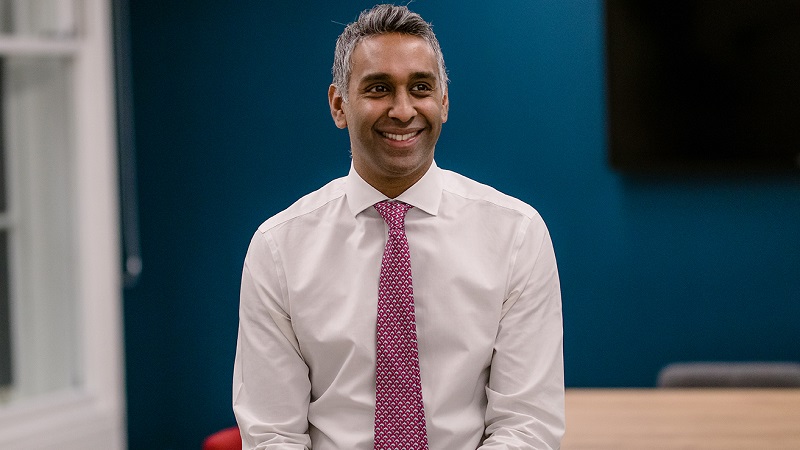Canada Life Asset Management multi-asset manager Jordan Sriharan (pictured) sat down with Portfolio Adviser to discuss adding alpha through multi asset, defensive plays and high yield opportunities amid a higher interest rate environment.
“When you have 12 years of quantitative easing and a bull market, I think a lot of behavioural biases change over that time and multi asset, to my mind, should always be dynamic – you should be disciplined about what you’re buying and selling,” he said.
“Now that we’re in a regime of higher structural rates and volatility is much higher, risk management is crucial and clients should be looking out for it.”
Sriharan joined Canada Life in 2021 and runs a range of risk-adjusted multi-asset portfolios alongside co-manager Craig Rippe.
“We find ways of adding alpha through lots of smaller positions, rather than big asset allocation calls, which has ended up being the modus operandi for many peers. Overweight equities, underweight fixed income was the classic default position for everyone.
“If you think of the world through the lens of being more neutral, which I think is sensible, then you’re naturally focused on ideas within the sub asset classes. That, to me, is how I think you add alpha through multi asset in the long term.”
Equities are not the only game in town
A key allocation call for Sriharan came following the recent ramping up of interest rates in the US and globally, which has prompted him to consider opportunities in short duration, high yield bonds.
“For a long time, equities were the only game in town because quantitative easing was suppressing bond yields. Equity markets were going from strength to strength because of robust earnings growth and low financing costs, but now we live in a world where cash is nearer 5%.
“If you’re starting with that cash yield, you need to generate at least that in portfolios. Yes, capital will fluctuate and you might even lose money if yields carry on going up and you invest at the current interest rate. But all of a sudden, the return profile seems quite powerful.”
Sriharan points out that the yield on the short duration high yield index is at around 7.5-8%, which he finds a compelling opportunity.
“The 10-year total return from the FTSE 100 has been c.4.5% annualised, you can almost double that in a two-year high yield bond allocation. So, the rules of engagement on asset allocation have changed quite a bit.” he says.
“Despite the negative downside of high yield, and that can be quite powerful. We could own UK equities, which could generate another 5% per annum for the next three years, or you could have your bond allocation generating 8% in high yield for the next three years. The relative value story has really changed.”
“It’s easy to forget that the consistent alpha comes from getting those sub asset class calls right rather than just having a high conviction on fixed income. So we’re constantly trying to optimise that over the course of time.”
Defensive stocks
The multi-asset team at Canada Life has also recently revised its equity allocation, trimming its UK exposure in favour of slight overweights in the US, Europe and Japan over the second half of 2023.
Sriharan has also pondered upping the portfolio’s exposure to defensive stocks, through the form of sector ETFs.
“We have thought about putting in defensive ETFs and by that I mean pharmaceuticals, consumer staples, which are interesting and they provide a useful narrative and are robustly defensive.
“Those defensive sectors do really well in the eye of the storm. The rest of the time, they’re also fraught with idiosyncratic issues, such as in pharma where AstraZeneca has been great but Pfizer has struggled post-Covid.
“Novo Nordisk has been this great story and we’ve held it through our European fund which has done very well, but for every Novo Nordisk there is another peer struggling and so on. So defensive sector ETFs are not a slam dunk of an idea to protect your portfolio.
“Our approach is to be pragmatic as an idea may only work for three months or six months. And what we’d rather do is gradually rotate into more defensive assets like fixed income.”
In terms of alternatives, property is a good diversifier for Sriharan. The multi-asset team invests in property through global and UK Reits. However, the team is also considering tweaking its overall real assets exposure.
“We’re looking at what the construction of a real assets portfolio may look like. The idea for which, in the first instance, needs to be diversified from bonds and equities or have some sort of correlation in between, because REITs are great when they’re working but they behave like equities which ultimately impacts our risk budget.”






